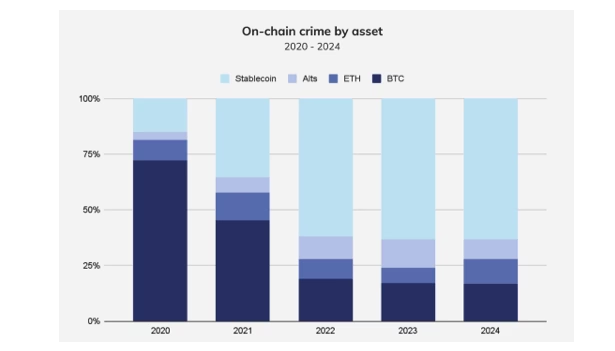A recent warning from the Financial Action Task Force (FATF) about the rise of stablecoin-related crimes does not pose a threat to the cryptocurrency industry, according to executives at blockchain intelligence firms.
The FATF’s call to address rising illicit stablecoin activity reflects a need for close monitoring and analysis rather than an effort to curb their growth, according to executives at Chainalysis and Asset Reality.
The global financial crime watchdog sounded the alarm on stablecoins Thursday, asking regulators to focus on mitigating the risks of their potential mass adoption.
“That’s not anti-crypto. It’s a recognition that credibility and growth depend on regulation that actually works,” Asset Reality co-founder Aidan Larkin told Cointelegraph.
Stablecoins make up 63% of illicit crypto transfers
“Stablecoins are the dominant form of crypto asset for transacting value as well as for undertaking illicit activity,” Chainalysis policy adviser Jordan Wain said. He cited data from the “2025 Crypto Crime Report” by Chainalysis, which revealed that 63% of all onchain illicit transaction volumes were denominated in stablecoins.
According to Wain, the FATF’s alarm on stablecoins aims to promote “more uniform licensing and supervision of stablecoin issuers” across countries, deployment of real-time monitoring and closer international collaboration to track, identify and disrupt illicit flows.
“[The] FATF isn’t calling for a ban on stablecoins. It is calling for visibility and better enforcement,” Asset Reality’s Larkin said, adding that this fits with the broader strategy announced in 2023 for increased focus on asset recovery.
“That means applying the same AML [Anti-Money Laundering] standards used in traditional finance to the digital world,” Larkin added.
Tracking crimes is only part of the equation
Larkin said that applying advanced blockchain intelligence tools is not enough to mitigate risks behind a mass adoption of stablecoins.
“Monitoring onchain behavior is only part of the equation,” he said, adding:
“Enforcement in the form of secondary sanctions has been debated by politicians in multiple jurisdictions to place more onus and responsibility on those crypto entities that knowingly facilitate sanctions evasion and use secondary sanctions to pressure compliance […]”
Chainalysis’s Wain also…
Click Here to Read the Full Original Article at Cointelegraph.com News…
